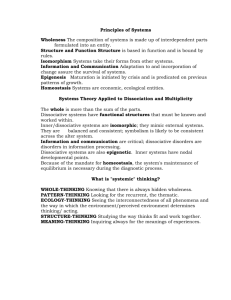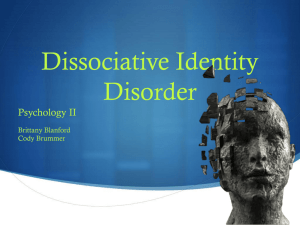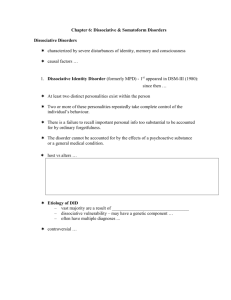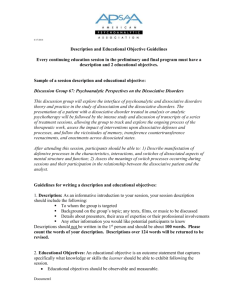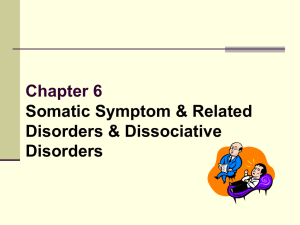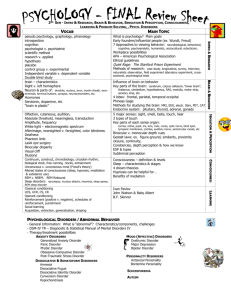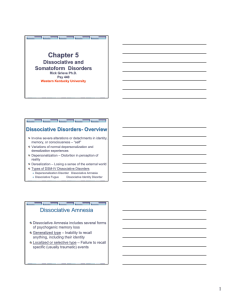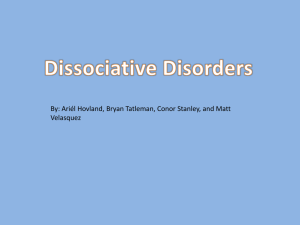Multiple Personality Disorder
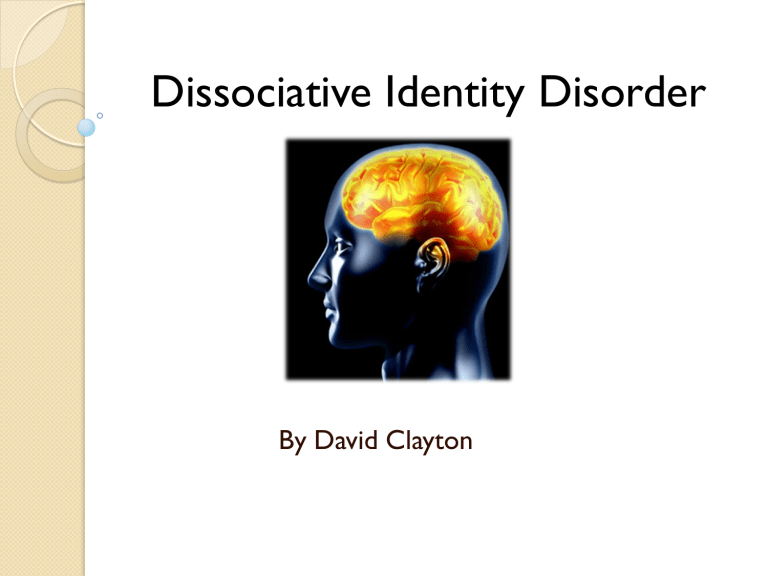
Dissociative Identity Disorder
By David Clayton
What is Dissociative identity disorder?
Dissociative identity disorder
1 is a condition in which a single person displays multiple distinct identities or personalities
2
, each with its own pattern of perceiving and interacting with the environment.
Symptoms of dissociative identity
disorder
Depression
Mood swings
Suicidal tendencies
Sleep disorders (insomnia, night terrors, and sleep walking)
Anxiety, panic attacks, and phobias (flashbacks, reactions to stimuli or "triggers")
Alcohol and drug abuse
Compulsions and rituals
Psychotic-like symptoms (including auditory and visual hallucinations)
Eating disorders
Criteria for
3
diagnosis for Dissociative
Identity Disorder
The patient has at least two distinct identities or personality states. Each of these has its own, relatively lasting pattern of sensing, thinking about and relating to self and environment.
At least two of these personalities repeatedly assume control of the patient's behavior.
Common forgetfulness cannot explain the patient's extensive inability to remember important personal information.
4
This behavior is not directly caused by substance use (such as alcoholic blackouts) or by a general medical condition.
Prognosis
Symptoms are mainly dissociative and posttraumatic. These patients generally function well and recover completely with treatment.
Dissociative symptoms are combined with prominent symptoms of other disorders, such as personality disorders, mood disorders, eating disorders, and substance abuse disorders. These patients improve more slowly, and treatment may be less successful or longer and more crisis-ridden.
Prognosis con.
Patients not only have severe symptoms due to coexisting mental disorders but may also remain deeply emotionally attached to their abusers. These patients can be challenging to treat, often requiring longer treatments that typically aim to help control symptoms more than to achieve integration.
Statistics
Dissociative disorders are not common psychiatric illnesses but are not rare.
Few good epidemiological studies have been performed some estimate 1 per 10,000 in the population but higher proportions are reported among psychiatric populations between 0.5% and 2%
Some studies show that women make up the majority of these cases 90% or more.
5
Perhaps 50% of all psychiatrists deny that it even exists.
6
Schizophrenia VS DID
People seem to most often confuse someone who is suffering from schizophrenia with someone who has dissociative identity disorder. While both are chronic, serious mental health concerns, the differences between these two disorders are stark. People with schizophrenia hear or see things that aren’t there and believe things that aren’t true, often tied into a complex, irrational belief system. They do not have multiple identities or personalities. People with DID do not have delusion beliefs, outside of their multiple personalities or identities. The only voices they hear or talk to are these identities.
7
Treatment
Integration of the identity states is the most desirable outcome. Drugs are widely used to help manage symptoms of depression, anxiety, impulsivity, and substance abuse but do not relieve dissociation.
For patients who cannot or will not strive for integration, treatment aims to facilitate cooperation and collaboration among the identities and to reduce symptoms.
References
Haddock, D. B. (2001). The Dissociative Identity Disorder Sourcebook.
New York: Mcgraw-Hill.
American Psychological Association. (2000) DSM-IV-TR . Arlington, VA:
American Psychological Association .
Alejandra Swartz. (December 10, 2001). Dissociative Identity Disorder.
In AllPsych Journal. Retrieved undefined, from http://allpsych.com/journal/did.html
.
John M. Grohol, Psy.D. (7 Sep 2006 ). Dissociative Identity Disorder
Treatment. In Psych Central. Retrieved undefined, from http://psychcentral.com/disorders/sx18t.htm
.
Michael W. Smith, MD. (April 17, 2008). Dissociative Identity Disorder
(Multiple Personality Disorder). In WebMD . Retrieved undefined, from http://www.webmd.com/mental-health/dissociative-identitydisorder-multiple-personality-disorder.
